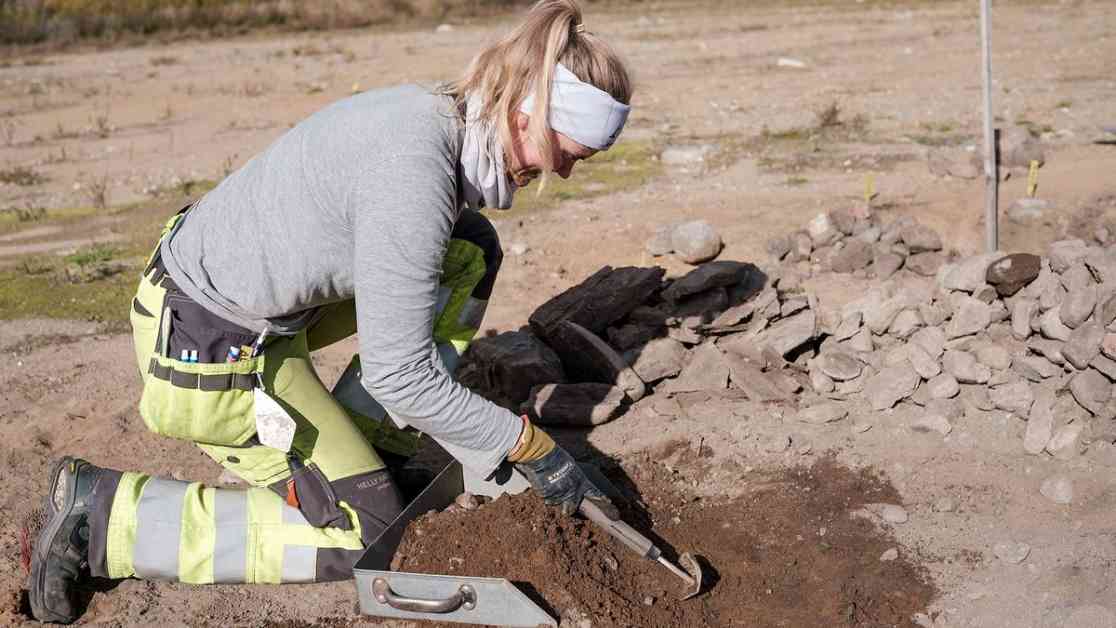Archaeologists in Sweden recently made a fascinating discovery in the Pryssgården Iron Age graves. The burial site, dating back to between 500 B.C. and 400 A.D., contained at least 50 burials, with one in particular standing out due to the presence of an iron pocketknife jabbed into the grave of an Iron Age woman.
Moa Gillberg, an archaeologist at Sweden’s National Historical Museums, expressed the uniqueness of this find, highlighting that the knife was intentionally placed in the grave, specifically for the woman. The location of the burial ground in the southern Swedish borough of Pryssgården, about 105 miles southwest of Stockholm, adds to the significance of the discovery.
During the excavation process, archaeologists uncovered various artifacts, including jewelry detected by metal detectors, ancient dwellings, a storehouse, and a well, in addition to the graves. While most of the graves contained cremated remains, some were covered with symmetrically laid stones, indicating different burial practices during the Iron Age.
In the grave of the Iron Age woman, archaeologists found a well-preserved iron folding knife and a small needle. The presence of these items raises questions about their significance and purpose in the burial. While the knife may have been used for practical purposes like leather preparation, its unusual position in the grave remains a mystery.
Similar discoveries of women’s graves containing knives and needles from the late Iron Age and early Viking Age have been found in southern Sweden, shedding light on the burial customs and practices of the time. The archaeological team plans to continue their work at the Pryssgården site, exploring potential structures and monuments that may provide further insights into the ancient society.
The discovery of the iron pocketknife in the burial of the Iron Age woman adds to our understanding of ancient burial rituals and the significance of personal belongings in honoring the deceased. As archaeologists uncover more clues at the site, we may gain valuable insights into the lives and customs of the people who lived in this region during the Iron Age. Stay tuned for updates on this intriguing archaeological find as researchers delve deeper into the mysteries of the past.










